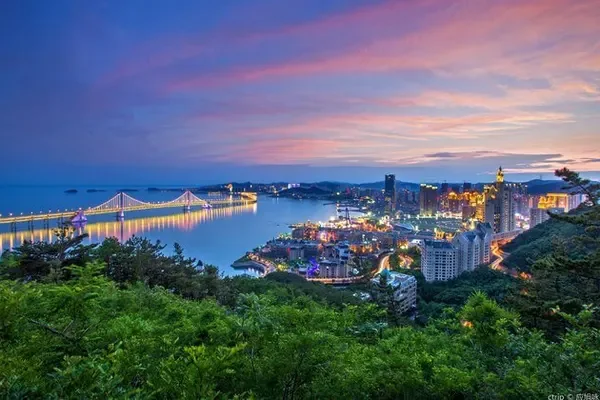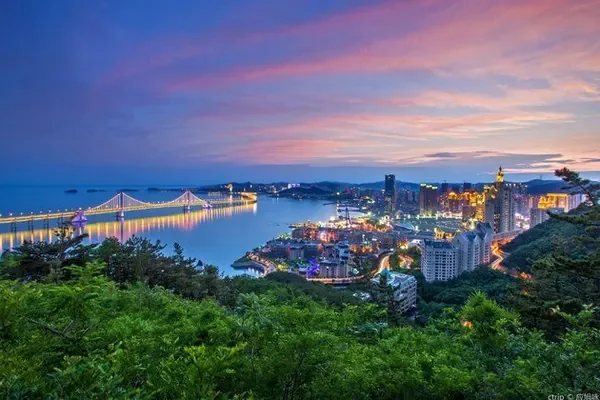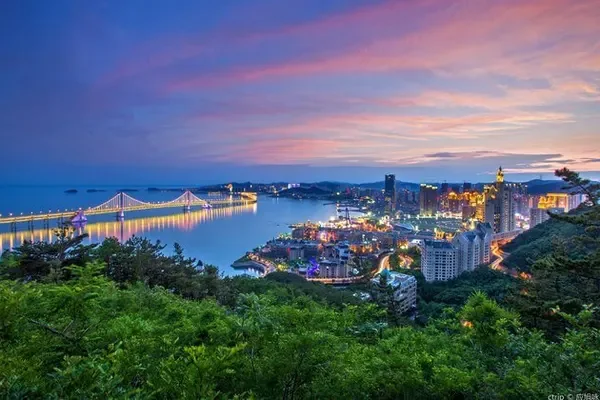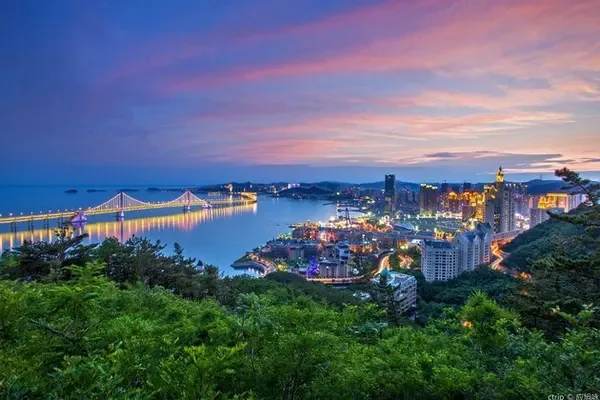★Tourist location: Guizhou Anshun Dragon Palace Scenic Area
Fortunately, this season is not the peak tourist season for Dragon Palace, so we didn't have to wait for more than one or two hours as the Internet said. Not long after, they boarded the ship smoothly, which is called "once entering the Dragon Palace".

The karst landform has strange and changeable stalactite shapes, which will always show colorful splendor under the illumination of lights. This is true in Yelang Cave, and it is also true in Dragon Palace. The structure of the cave hall is like the palace of the Dragon King in myths and legends, and the stalactites are in various shapes, which can be imagined by people.

People say "Looking at the Dragon Palace to know the world's water caves", which means that the Dragon Palace can be regarded as the most scenic spot in the water cave. In fact, this sentence is really not an exaggeration. The water cave in the entire Dragon Palace is said to be 15 kilometers long. It's just that what we can visit is only a small part of it, perhaps only 1500 meters in the water cave is open.

Once entering the Dragon Palace, it is 840 meters long and consists of five parts: the Dragon Welcome Hall, the Embossed Mural Hall, the Five Dragons Protecting the Treasure Hall, the Crystal Palace, and the Gaoxia Valley. Tourists are on board throughout the journey. The top of the head is illuminated by lights, which are colorful and dazzling. The water surface is very calm, reflecting the entire cave wall like a mirror. For a while, it really feels like being in the palace of the Dragon King.

The Second Dragon Palace is 400 meters long and consists of four halls. The pool is deep and the water is secluded, we seem to have entered a mysterious time tunnel, and we don't know what day and night it is.

There are many scenic spots along the way, such as Clam Shell Rock, Tiger Cave, Qunfang Valley, Wanjia Cave... But many caves can only be seen at the entrance of the cave, and you can't go in for sightseeing. The boat is leisurely, the route is established, and there is no way to stay at the entrance of the cave.

But along this water flow, the bizarre stalactites along the way are enough to keep us lingering. So it seems that it is not a pity to miss one or two scenic spots.

In fact, the Dragon Palace is far more than two entrances. It also has a name called "Five Entry Dragon Palace", which means that the Dragon Palace can enter five times without exiting. But now there are only two or so that are open to tourists.

Perhaps it is because I have seen Yelang Cave first, so I am less amazed by the gorgeous stalactites in the Dragon Palace. However, there is no boat swimming hole in Yelang Cave, but a pontoon bridge instead, so I am still amazed at this water hole.

No wonder some people say that the Dragon Palace is the "Underground Lijiang River" and "Stone Forest on the Water". These words are not false at all. Anyway, stalactites are such strangely shaped species that you can imagine them as anything. So, I imagined to my heart's content, imagining the stalactites on the cave wall as the scenery of the Lijiang River on the back of 20 RMB.

After walking through the water cave, there is still a dry cave, but in comparison, it is not as amazing as the water cave.
Dragon Palace Xuantang is a round pond with an area of less than 10,000 square meters. If you don’t know its name, you will casually regard it as an inconspicuous member of Guizhou’s landscape. The strange thing about Xuantang is on the word "Xuan". The pond water does not rely on the wind, but it rotates clockwise day and night without stopping.

"Where the mountains don't turn, the water turns", this is the lyrics of a song sung by Na Ying. When I listened to it, I thought it was just a word game. Only when I saw the swirling pond did I know that nature really has such a kind of mountain. The whirling water is a spectacle.
Tongxuanhe Zuoyan, on the other hand, planted a word "dragon" by interplanting plants. This character is really too big, seven or eight times larger than the area of Xuantang, and it can be called the largest plant Chinese character in the world.

The plants are one year old and one withered, and the people of Anshun have really painstakingly planted this "dragon" character along a fixed pattern every year. However, this is also one of the three wonders of the Dragon Palace, which is well-known both at home and abroad. Perhaps, even foreigners who don't know Chinese characters will know the Chinese character "dragon" with the most Chinese characteristics when they arrive at this scenic spot.

Guanyin Cave got its name because there is a 50-meter-high Guanyin statue on the cliff inside the cave. This Guanyin statue is not carved by hand, but a stalactite. Of course, there are also man-made Buddha statues. The statue of Avalokitesvara in white clothes enshrined in the hall is 12.6 meters high and is the largest statue of Avalokitesvara in a cave in China.

This temple made of natural karst caves is really rare, and its scale also ranks first in the country. The cave hall of the main hall covers an area of more than 1,000 square meters, and the other halls are also natural caves. Without the exquisite karst landform, it would not be possible to achieve this Guanyin Cave.
It is said that there are still three unsolved mysteries in the Dragon Palace, one is the flower fish tide in the flower fish pond, the other is the Donghai drum music in Qunfang Valley, and the third is the cave dweller Huiti in Wanjia Cave.

The Huayu Pond is the waterway from the second entrance to the Dragon Palace to the third entrance to the Dragon Palace. The pond covers an area of about 2,400 square meters. It is amazing that when the season turns from sunny to rainy, the pond water will appear "one pond is divided into two waters, and the two waters have different colors". This is already rare enough, and sometimes there will be strings of blisters gushing out, as if fish are jumping and playing. There is also a legend here. According to legend, there used to be various flower fish jumping in the tide here. They wanted to practice to become a dragon. The wish was beautiful, but the reality was too cruel, and they were never able to become a dragon. Later, Patriarch Bodhidharma saw their sincerity, so he passed on the opportunity to catch a glimpse of the leopards. They worshiped Avalokitesvara as the guardian fish and dragon, leaving a legendary story for people to talk about.

There are often strange sounds in the caves of Qunfang Valley. It is said that if you listen closely, it sounds like the music played by monks when they were doing ashram. Many local people will come to burn incense and worship. As for why these "music" are formed, it is naturally a big mystery of Dragon Palace.

Wanjia Cave is a cave dwelling site unique to the Dragon Palace. The stone bed, stone board and other daily necessities used by the ancestors of the Dragon Palace are preserved in the cave. It is said that the descendants of Wan Zhang, a disciple of Mencius during the Warring States Period, returned to their ancestral home from Jiangxi with their wives and children. This Wan Zhang is from the Bai nationality. During the migration, they settled in Guizhou because they were nostalgic for the beautiful scenery of mountains and rivers. Later, the Wan clan moved here to continue their descendants, so this place became Wanjiadong. In the cave, there is a picture of health preservation and exercise of "Strong Waist Ba Duan Jin", but the relics are nothing more than who painted this picture, which has become a mystery of the Dragon Palace.













